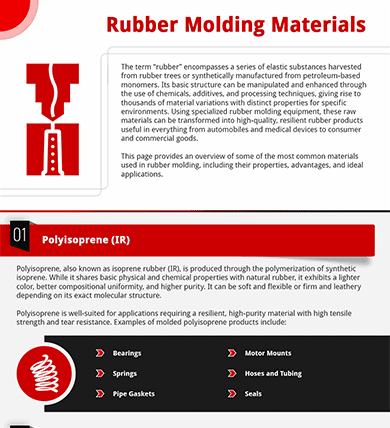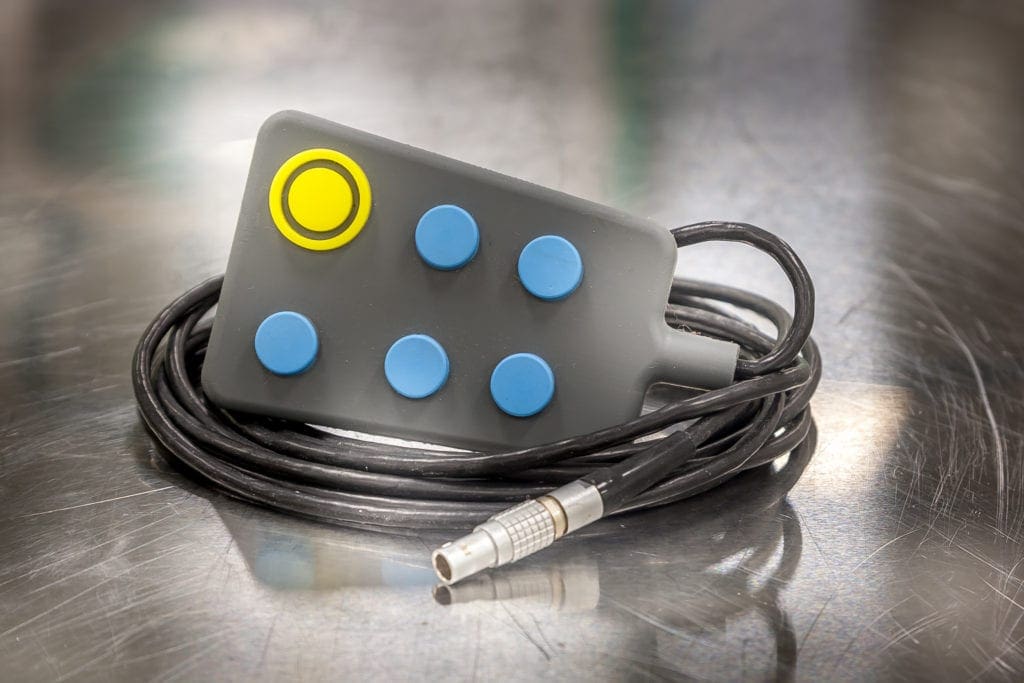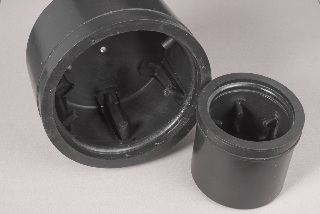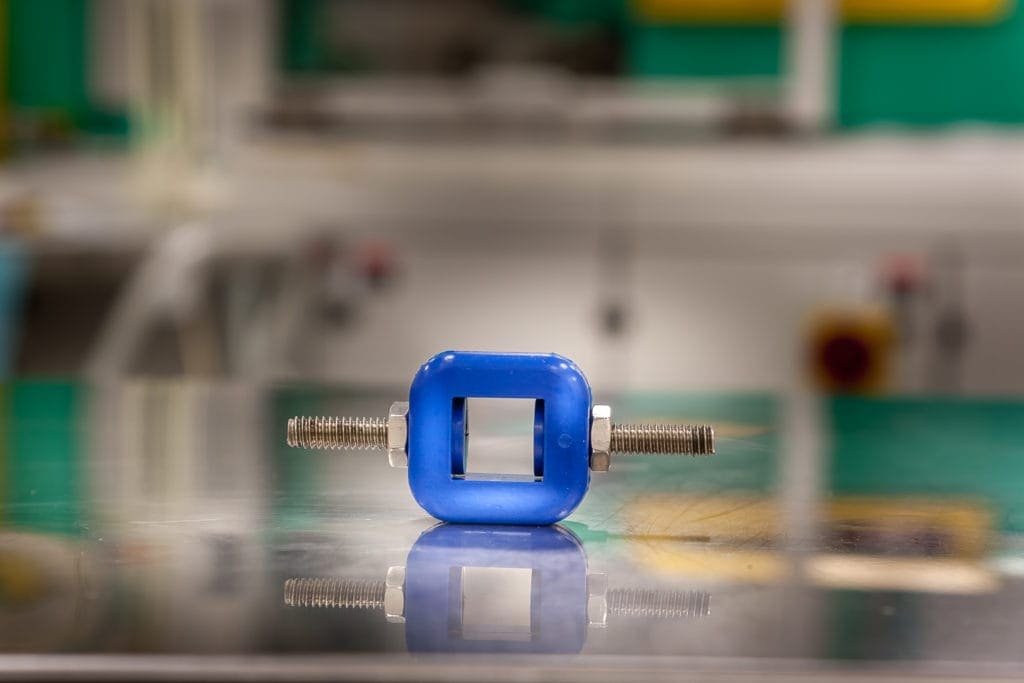The term “rubber” encompasses a series of elastic substances harvested from rubber trees or synthetically manufactured from petroleum-based monomers. Its basic structure can be manipulated and enhanced through the use of chemicals, additives, and processing techniques, giving rise to thousands of material variations with distinct properties for specific environments. Using specialized rubber molding equipment, these raw materials can be transformed into high-quality, resilient rubber products useful in everything from automobiles and medical devices to consumer and commercial goods.
This page provides an overview of some of the most common materials used in rubber molding, including their properties, advantages, and ideal applications.
Polyisoprene (IR)
Polyisoprene, also known as isoprene rubber (IR), is produced through the polymerization of synthetic isoprene. While it shares basic physical and chemical properties with natural rubber, it exhibits a lighter color, better compositional uniformity, and higher purity. It can be soft and flexible or firm and leathery depending on its exact molecular structure.
Polyisoprene is well-suited for applications requiring a resilient, high-purity material with high tensile strength and tear resistance. Examples of molded polyisoprene products include:
- Bearings
- Springs
- Pipe gaskets
- Motor mounts
- Hoses and tubing
- Seals
Styrene-Butadiene Rubber (SBR)
Styrene-butadiene rubber (SBR) is a general-purpose synthetic rubber made from the polymerization of styrene and butadiene monomers. Often used as a low-cost substitute for natural rubber, this polymer provides good abrasion resistance, high impact strength, and excellent aging stability with the right additives. Its level of hardness is influenced by the styrene-to-butadiene ratio, with a higher styrene content resulting in a harder and less elastic material.
SBR is an affordable option for abrasive applications requiring a high-strength, wear-resistant, and non-toxic rubber material. Common applications include:
- Cable insulation
- Roll covers
- Seals for hydraulic brake systems
- Industrial equipment components
- Drive couplings
Ethylene-Propylene (EPM Rubber & EPDM Rubber)
Ethylene-propylene rubbers include two main types, differentiated by minor structural variations:
- Ethylene propylene (EPM) rubber – A copolymer of ethylene and propylene.
- Ethylene propylene diene monomer (EPDM) rubber – A terpolymer of ethylene, propylene, and a small amount of diene monomer.
Both forms of rubber possess great electrical insulation properties and are resistant to ozone, sunlight, extreme temperatures, and weathering. In EPDM, the addition of the diene monomer allows for sulfur vulcanization to form a stronger and more stable polymer. Depending on its formulation, EPDM can tolerate temperatures ranging from -40°C to 175°C and can be used in outdoor environments for extended periods without degrading. It also exhibits excellent resistance to steam, acids, alkalis, alcohol, coolant, and other polar fluids.
Commonly molded EPM and EPDM products include:
- Seals
- Diaphragms
- Gaskets
- Hoses
- O-rings
- Automotive moldings
Nitrile Rubber (NBR)
Nitrile rubber, also known as acrylonitrile-butadiene rubber (NBR), is a low-cost synthetic elastomer made from the polymerization of acrylonitrile and butadiene monomers. This material is known for its high resistance to petroleum-based oils and fuels, which increases with the amount of acrylonitrile used in its composition. It also exhibits a low compression set, high tensile strength, and stability across a wide range of temperatures.
Two commonly used NBR variations include:
- Carboxylated nitrile rubber (XNBR). Carboxylated nitrile rubber is produced by chemically modifying NBR’s structure to include an acidic monomer such as acrylic acid. This modification enhances the material’s tensile strength, abrasion resistance, and tear resistance.
- Hydrogenated nitrile rubber (HNBR). Hydrogenated nitrile rubber is formed by saturating the butadiene portions of the polymer with hydrogen. The resulting material has a higher tensile strength and better resistant to abrasion, heat, chemicals, and ozone than unmodified nitrile.
Nitrile-based rubbers are well-suited for automotive, aerospace, and industrial applications as a fuel- and oil-resistant material. Common rubber-molded nitrile products include:
- O-rings
- Static seals
- Oil seals
- Engine hoses
- Automotive gaskets
Silicone (MQ, VMQ, & PVMQ)
Silicone is a synthetically manufactured transparent elastomer composed of siloxane. Known for its excellent flexibility, low toxicity, low chemical reactivity, and wide range of operating temperatures, silicone can satisfy strict material requirements in numerous industries and environments.
Commonly used silicone variations include:
- MQ silicone. The simplest, most basic form of silicone is methyl silicone, more commonly referred to as MQ silicone. Characterized by repeating units of oxygen in its backbone, MQ silicone demonstrates great UV, ozone, and weathering resistance. This variation of silicone is most often used as a foundation for enhancing specific material properties since it lacks the elastomeric properties required for most rubber applications.
- VMQ silicone. Vinyl methyl (VMQ) silicone is an elastomer produced by replacing the methyl groups in MQ silicone with vinyl groups. This further enhances the material’s working temperature range, as well as its compression set.
- PVMQ silicone. With phenyl vinyl methyl (PVMQ) silicone, phenyl groups are incorporated into the silicone polymer along with vinyl and methyl groups. This improves the material’s flexibility and functionality in low-temperature environments, as well as its resistance to radiation.
Thermoplastic Elastomers (TPE)
Thermoplastic elastomers are a group of polymers that merge the elasticity and flexibility of elastomers with the dynamic processability of thermoplastics. This is achieved by incorporating soft elastic segments and hard crystallizable segments into the material. The soft segments enhance the material’s extensibility, while the hard segments provide reinforcement and strength. With these features, the material can be heat-processed similar to plastics but still provide rubber-like elastic properties after cooling.
The specific polymers that are blended together to produce the TPE will depend on the properties required by its application. The resulting material can then be manipulated into various shapes through thermoplastic injection molding, a cost-effective fabrication process in which the material is melted, formed within a mold, and cooled.
Common applications of injection-molded TPEs include:
- Roofing materials
- Sealings
- Gaskets and O-rings
- Damping elements
- Housings
- Mounts
- Syringes and catheters
Additional Materials & Selection Considerations
Other elastomers and material blends to consider for more specialized applications may include:
- Neoprene rubber (polychloroprene rubber). The presence of chlorine in the structure of neoprene rubber enhances its resistance to oil, oxidative degradation, and ozone.
- Butyl rubber. Butyl rubber, also known as isobutylene-isoprene rubber (IIR), consists primarily of isobutylene with small amounts of isoprene incorporated. Properties include:
- Aging, weathering, and ozone resistance
- Flexibility at low temperatures
- Tolerant of phosphate ester hydraulic fluids and ketones
- Chlorinated polyethylene (CM). Chlorinated polyethylene (CM) is a low-cost variation of polyethylene, with chlorine incorporated into the structure. Benefits include:
- Dynamic fatigue resistance
- Aging, weathering, and ozone resistance
- Good color stability
- Custom compounds. Polymers with complementary properties can be blended in various ways, providing the ability to tailor the behavior of the material for the application.
Material Selection Considerations
When selecting or customizing an elastomer for an application, it is important to find a balance between cost, application and environmental compatibility, and manufacturability. Some specific factors to keep in mind during the rubber selection process include:
- The material’s compatibility with its environment, including temperatures, fluids, chemicals, UV light, and sunlight
- The presence of degradative or abrasive external contaminants
- Whether the material will come into contact with the human body (cytotoxicity)
- The material’s ability to be processed and manufactured into the desired product while still retaining its useful properties
Custom Molded Rubber Products at Elastomer Technologies, Inc.
When it comes to rubber-molded products, selecting the right elastomer is key for optimizing the product’s performance and reliability in its application. At Elastomer Technologies, Inc., our cutting-edge rubber molding processes and comprehensive understanding of elastomers allow us to design and manufacture custom rubber-molded parts for virtually any application. Each product is fabricated from high-quality materials that have been carefully chosen to accommodate the application’s specific environmental and operational requirements.
Our unparalleled rubber molding capabilities are supported by:
- Over 30 years of rubber molding experience
- ISO Class 8 clean rooms
- Large, upgraded facility for improved material control and workflow
- Hydraulic system enhancements to maximize compression molding equipment efficiency
- Personalized and innovative services
To learn more about rubber molding materials or about our rubber molding services and capabilities, contact us or request a quote today.




